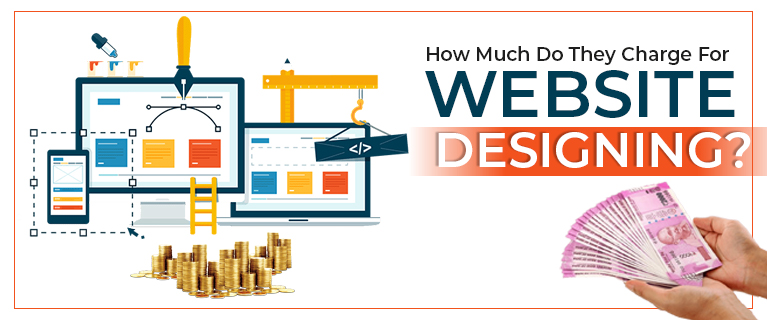In the rapidly evolving landscape of the digital age, the significance of establishing a robust online presence has become non-negotiable for businesses of all scales. At the heart of this digital transformation lies the pivotal role of web design, a cornerstone in ensuring a company’s success in the competitive online realm. While DIY website builders may offer a seemingly accessible avenue, they often fall short in providing the nuanced flexibility necessary for crafting a truly functional and distinctive online presence.
In today’s hyper-connected world, a website is not merely a digital storefront but a dynamic interface that serves as the face of a business in the virtual realm. It is the nexus where brand identity, user experience, and functionality converge to create a lasting impression on visitors. Businesses recognize that a well-designed website goes beyond aesthetics; it is a strategic tool that can drive engagement, foster brand loyalty, and ultimately contribute to the bottom line.
Read Also This – Comprehensive Guide Who Wants To Design Website
Amid the myriad choices available for website development, the expertise of a professional web designing Company emerges as an invaluable asset. These professionals bring a wealth of experience and a refined skill set to the table, ensuring that the website not only meets but exceeds the evolving expectations of the digital-savvy audience. Their ability to blend creativity with functionality, coupled with an understanding of the latest design trends and technological advancements, empowers businesses to stand out in the crowded digital landscape.
However, as businesses contemplate the decision to enlist the services of a professional web designing company, a burning question invariably arises: What is the cost associated with developing a custom-built website that encompasses all essential elements, including robust security features?
The answer to this question involves a nuanced exploration of various factors that contribute to the overall cost of web design. From the intricacies of design and development to the incorporation of security measures, each facet plays a crucial role in determining the financial investment required. It is this exploration that serves as the focal point of decision-making for businesses seeking to embark on or revamp their digital journey.
In the forthcoming discussion, we will delve into the intricacies of web design costs, unravelling the layers that contribute to the overall expenditure. From understanding the hourly rates of web designing companies to dissecting the factors that influence charges, we aim to provide clarity on the financial considerations involved in creating a custom-built website. Through this exploration, businesses can navigate the complex terrain of web design costs with informed decision-making, ensuring that their digital endeavours align seamlessly with their strategic objectives.
Understanding The charges
A Web designing Company typically charges around $75 per hour, with the overall cost for a company website ranging from $5,000 to $10,000. The average expense, covering setup, design, building, content creation, client training, and maintenance, is estimated at $6,760 for a basic website.
Read Also This – Is a Website Important for Your Business
1. Hourly Rate:
a. Standard Rate and Variability:
Web Designers and Web Designing Companies typically charge an average of $75 per hour for their services. However, it’s important to note that this rate can vary based on several factors, including the designer’s experience, expertise, and geographic location.
b. Project-Specific Considerations:
Freelance web designers often adapt their hourly rates based on project-specific elements. For instance, a project’s uniqueness, difficulty level, and the designer’s commitment can influence whether the hourly rate is adjusted upward or downward.
2. Flat Rate:
a. Client Preferences and Challenges for Freelancers:
Clients often prefer flat rates as they provide clear upfront costs. However, for freelancers, offering flat rates can be challenging due to uncertainties in project timelines and potential changes requested by clients.
b. Breakdown of Costs:
A basic breakdown of costs for a flat-rate project may include setup, design and building, content creation, client training, and maintenance. This structure ensures that both parties have a transparent understanding of what the overall project entails.
3. Factors Influencing Charges:
a. Skill Level: The experience and skill level of a web designer or a web designing company play a crucial role in determining pricing. Designers with more expertise and a robust portfolio often command higher rates, reflecting their value in delivering quality work.
b. Type of Website: The complexity of the website being designed is a significant factor. Web Designing Companies usually charge higher for more intricate websites with additional features, such as e-commerce capabilities or user account functionalities.
c. Scope and Size: Larger projects, in terms of the number of pages, features, and overall scope, demand more time and effort. As such, web designing companies may adjust their pricing to account for the increased workload associated with comprehensive website designs.
d. Current Market Rate: Staying attuned to the current market rates is crucial for freelancers. This allows them to remain competitive in the industry, adjust their pricing strategies accordingly, and ensure a steady flow of work by aligning with prevailing market trends.
In summary, understanding web designing companies’ charges involves a nuanced consideration of hourly and flat rates, as well as a careful examination of factors that influence pricing decisions. Whether it’s the intricacies of project scope, the designer’s skill level, or market dynamics, these elements collectively contribute to the overall cost estimation for a web design project.
Determining the charges of a web designing company involves thorough research into average rates, evaluating individual skills and experience, and considering market dynamics. For freelance web designers, finding the ideal rate is crucial for business success.
Understanding Web Design Costs:
In the realm of web design, navigating the landscape of costs can be a complex task. To shed light on this, let’s explore some frequently asked questions that delve into the intricacies of how much web designing companies charge.
1. How Much Should a Web Designer Charge?
Determining the appropriate rate for a web designing company involves a careful consideration of various factors. While hourly rates vary, it’s common for web designing companies with the necessary skills and experience to aim for a minimum rate of $36 per hour. This baseline rate ensures that designers cover their expenses and make a profit on each project.
2. How Much Do Web Designers Charge per Hour?
Hourly rates in the world of web design typically fall within the range of $31 to $42 per hour, with an average of $36 per hour. This range accommodates various skill levels and project complexities, allowing designers to set rates that reflect their expertise and the demands of the specific project.
3. How Much Do Web Designers Charge per Website?
The cost of a website can vary significantly based on factors such as complexity, deadlines, and the experience of the company. While a basic business website might start at $500, more intricate projects could reach up to $5000. Understanding these variables is crucial for both clients and designers when negotiating project budgets.
4. How Much do Freelance Web Designers Charge?
Freelance web designers operate in a unique space, setting their rates based on a combination of services and project specifics. The hourly rates for freelancers typically range from $30 to $80, encompassing a wide spectrum that considers the designer’s expertise, project complexity, and other relevant factors.
5. How Much Does a One-Page Website Cost?
For those with specific needs and a tighter budget, a one-page website can offer a cost-effective solution. The price for a one-page website can start as low as $500. However, it’s essential to note that the actual cost may vary depending on specific requirements and the designer’s pricing structure. Despite being the most budget-friendly option, the price can still fluctuate based on the unique features and design elements incorporated.
In the realm of web design, where the digital canvas constantly evolves, the frequently asked questions presented earlier serve as illuminating guideposts, offering valuable insights into the labyrinth of web design costs. Whether you find yourself on the creative end as a designer aiming to set fair and competitive rates or on the business side, seeking a deeper comprehension of budget expectations, a comprehensive understanding of the factors influencing web design costs is paramount.
For web designing companies, the path to establishing fair rates involves a delicate dance between recognizing the value of one’s expertise and remaining attuned to the expectations of the market. The hourly rate, a cornerstone in determining compensation, reflects not only the skills honed through experience but also the ongoing investment in staying abreast of industry trends. It is a reflection of the intricate balance between the creative artistry of design and the practicalities of project management.
Understanding the multifaceted nature of project complexities further refines the pricing equation for a web designing company. Projects that demand a higher degree of uniqueness, delve into increased difficulty, or require a more substantial commitment often warrant adjustments in the hourly rate. This strategic calibration allows designers to accurately represent the value they bring to each project while adapting to the specific demands of the task at hand.
For business owners, navigating the realm of web design costs involves deciphering the intricacies of project intricacies, understanding the varying skill levels in the market, and acknowledging the dynamic nature of hourly rates. Recognizing that the complexity of a website – whether it’s a straightforward informational site or a multifaceted e-commerce platform – directly influences costs is a pivotal realization. It empowers businesses to align their budgetary expectations with the intricacies of their digital vision.
Scope and size emerge as critical determinants, reminding both designers and clients that the canvas of web design extends far beyond visual aesthetics. Larger projects, replete with diverse features, pages, and functionalities, inherently demand more time, effort, and expertise. By acknowledging this, businesses can make informed decisions about their digital investments, ensuring that the allocated budget corresponds with the ambitious scope of the envisioned web presence.
In the dynamic landscape of web design, staying attuned to current market rates is not merely a best practice; it is a strategic imperative. Freelancers, in particular, possess the flexibility to navigate market dynamics, adjusting their pricing strategies to remain competitive and ensure a steady flow of projects. This adaptability is a testament to the symbiotic relationship between designers and the ever-evolving market, fostering an ecosystem of innovation and fair compensation.
In conclusion, the exploration of web design costs transcends the mere arithmetic of hourly rates and project complexities. It embodies a profound understanding of the dynamic interplay between creativity, technical proficiency, and market dynamics. By navigating these complexities with confidence and clarity, both web designers and web designing companies can forge ahead, creating digital experiences that not only meet but exceed the expectations of the modern digital audience. Armed with insights into these intricacies, the journey into the world of web design becomes not just a financial transaction but a strategic partnership, where the visionaries and the architects collaborate to shape the digital landscapes of tomorrow.



